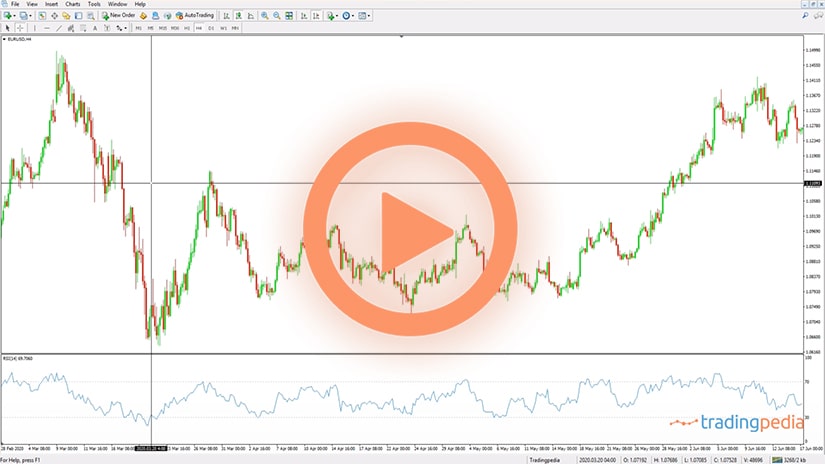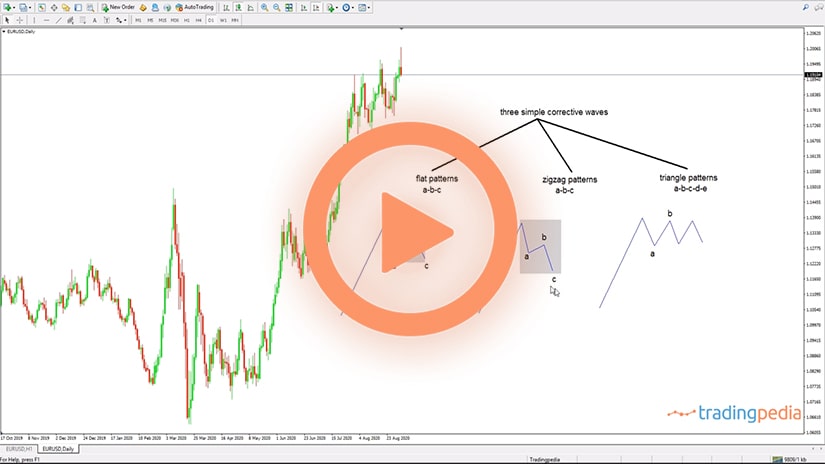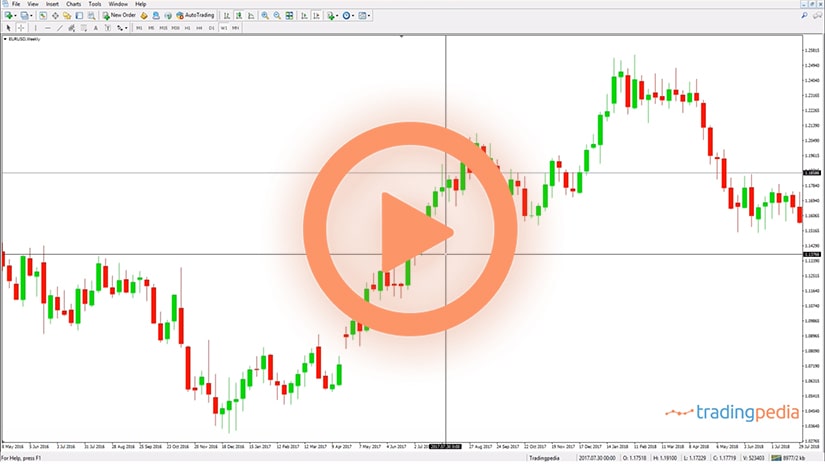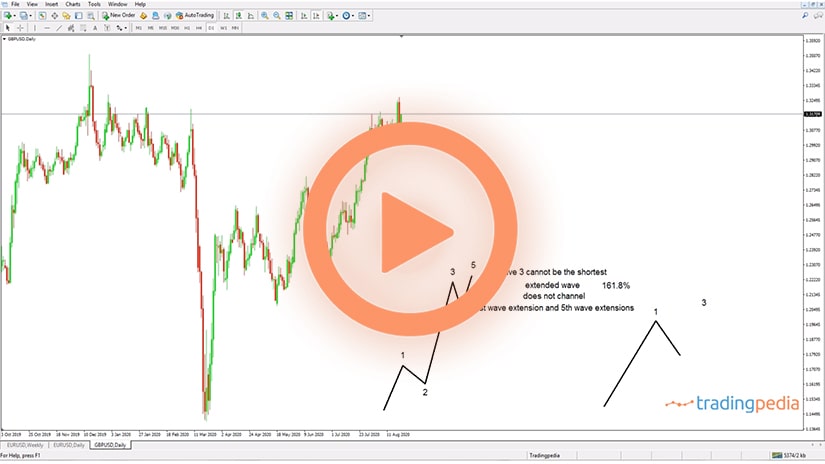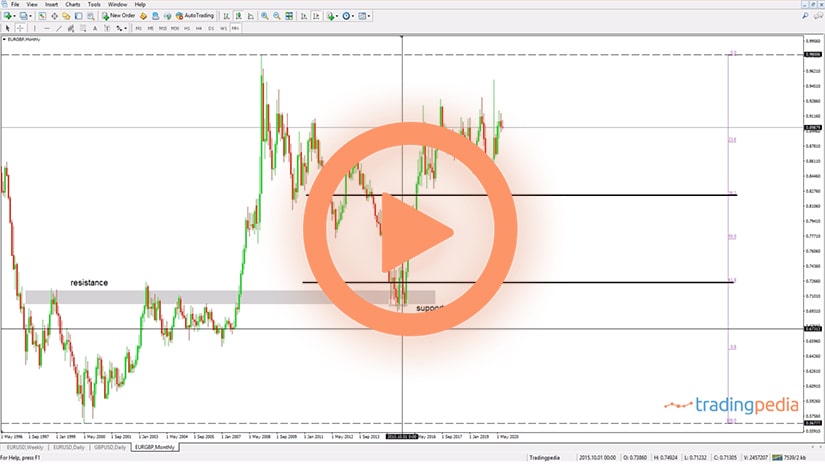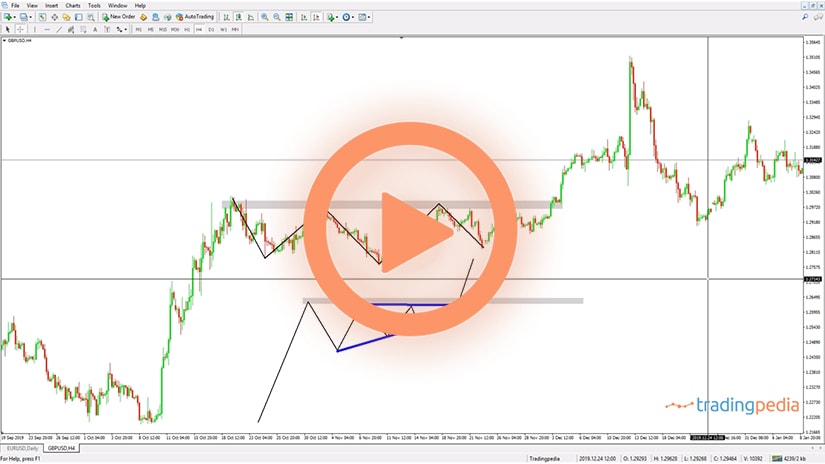
Hello there, this is tradingpedia.com and this video explains trading with the MACD oscillator also called the Moving Average Convergence Divergence oscillator. It is one of the most popular oscillators and like any oscillator is projected on the lower part of the screen.
This is the EURUSD trading 1.1949 on the last trading day of August on the hourly chart and the oscillator can be found under Insert, Indicators, Oscillators, and you see here the MACD.
Using the MACD Oscillator
It is important to understand what it stands for. It uses an MACD simple moving average (SMA) of nine periods, but also it uses a histogram based on two EMAs – 12 and 26. Whenever the two averages cross, or the fast EMA crosses above the slow EMA, you will see that the histogram turns negative – and the other way around.
This is how the MACD looks like and how things are worth mentioning here. It travels both into positive and negative territory and these grey, vertical lines here represent the histogram. We said that the moving average is 12, in black, and put it like this, and we add another moving average, 26, of a different color.
Focus on the two moving averages and the history. When the fastest EMA crosses above this line here, the MACD histogram turns positive. When the opposite happens, the histogram turns negative. In other words, the histogram shows the crosses on the two EMAs so you can easily identify the trending conditions on the market. This is important because it clears the chart. If we delete the averages now and keep only the MACD, we see the crosses on the MACD histogram. Here, and here. Each cross is represented here.
One way to trade the MACD is to trade the crosses, when the two averages cross. But as you can see, the histogram starts falling before the actual cross appearing on the chart. So, another way to trade it is to go short on the moment the histogram moves below the MACD SMA. In this case it helps finding an earlier entry and then remaining on the trade all the way until the market does the opposite.
Cross on the Zero Level
We can use the cross on the zero level as a confirmation that the market reversed – then do the opposite. These are the ways to trade with the MACD and another way is to look at divergences, or differences between the price and the oscillator. Because the oscillator uses multiple periods before plotting a value, it is always more useful to stick with the oscillator and not with the actual price. For example, we see that the EURUSD made two marginal highs but at the same time the MACD failed to confirm the second high.
So all we have to do is to wait for the histogram to move below the MACD SMA line, the red line here, and go on the short side. The fact that the market diverged from the price comes only to reinforce the bearish setup.
Here is no divergence because the MACD managed to put a new lower low. But here, at the current price action, the market forms a bearish divergence with the MACD. In other words, what should be look for a possible trade on the EURUSD? Going short here is risky because the market may still advance because the histogram is not clearly on a divergent mode.
What we need to see here is the MACD histogram to move below the MACD SMA and that is the entry on the short side providing the divergence is still in place. If these conditions are in place, going on the short side is warranted.
Place the stop at the highs, measure the risk, and go on the short side with a risk-reward ratio of 1:2 or 1:3, like the oscillator indicated.
Related Videos
Sum Up
To sum up, the MACD stands for Moving Average Convergence Divergence, it shows a histogram that reflects the crossing points of two EMAs, one faster and one slower, it can be used via divergences, and the ideal setup is to look at a divergence and combine it with a signal when the MACD histogram moves below the MACD SMA, or above in the case of a bullish trend.
Thank you and bye buy.
